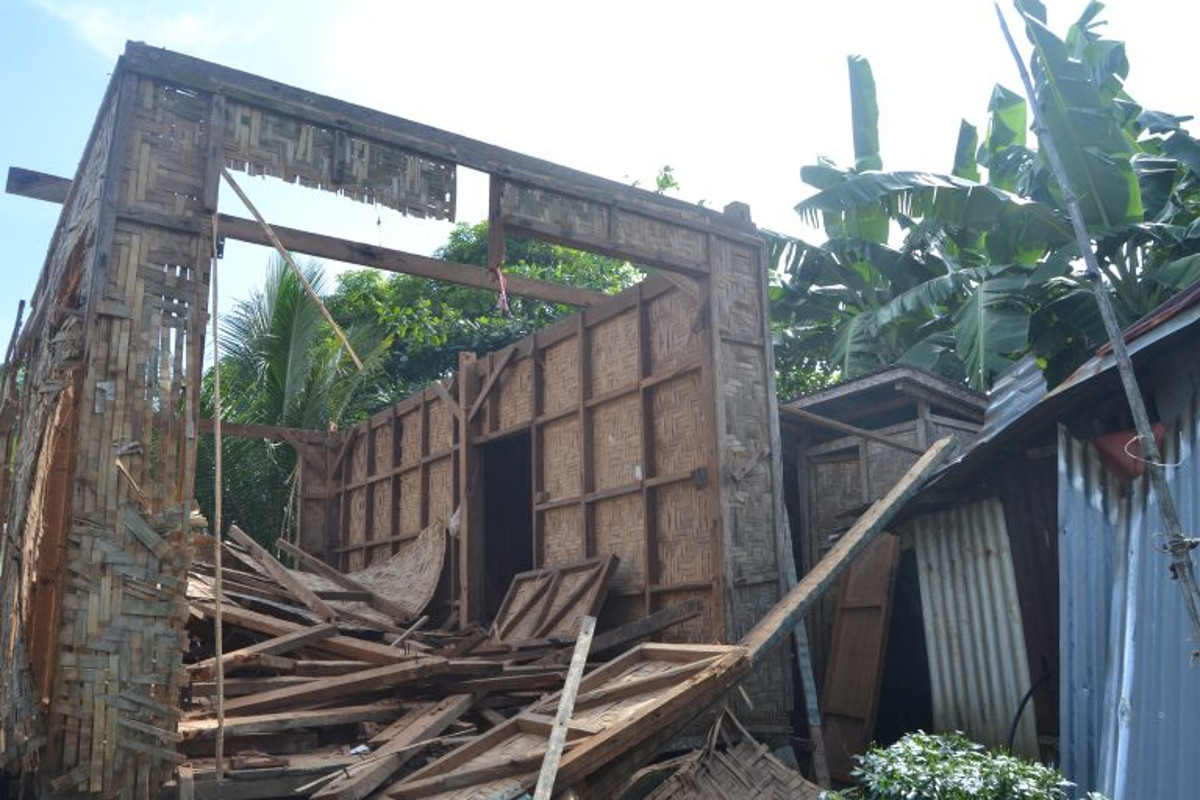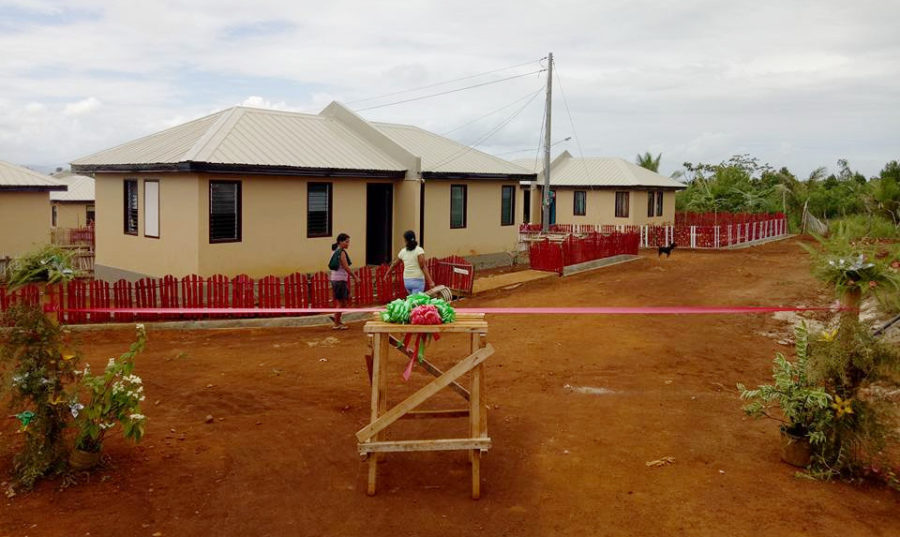
Two days after Jessylyn Abulencia received the key to her new, disaster-resilient house, she is back to her old place near the creek—not to stay, but this time to disassemble the temporary shelter that was her family’s home for the past five years.
Abulencia is one of the beneficiaries of the San Roque Eco-Village housing project in Barangay Cagaut, Salcedo, Eastern Samar who were given new homes on October 25.
Launched in June last year, San Roque Eco-Village is a post-Haiyan housing project led by the Institute of Environmental Science for Social Change (ESSC) in partnership with BASE Bahay Foundation Inc and the local government of Salcedo, Eastern Samar. Their aim is to accompany the relocation of 37 families from high-risk areas in Cagaut to a safe site.
Abulencia’s family was one of those affected by Haiyan in 2013. They have learnt to be always alert and vigilant during rainfall because, prior to the project, they had lived near the Cagaut River, an area highly susceptible to flooding.
“Sometimes, even if it’s not yet a typhoon and just a low-pressure area, our house would get flooded. We would then move to my in-laws’ house (which is concrete), but even there, we sometimes have to stay on the second floor because the water level reaches up to the windowsill,” she said.
Abulencia’s previous house was among many donated by the International Committee of the Red Cross in 2013 after Typhoon Haiyan struck central Philippines, and was not intended for permanent housing.
This is why the disassembling of beneficiaries’ previous houses is a crucial part of the agreement in the housing project, Project Administrator Liza San Mateo said.
“Our objective is to move them away from high-risk areas. ESSC has learned from the experience of other housing projects that beneficiaries prefer to stay in their old houses to be closer to their sources of livelihood. Others give away their old structures for their relatives to live in, which of course defeats the purpose of safe relocation,” she said.
This is true for Francisco Guilleno, a fisherman, who admitted he had a hard time letting go of his previous house because it is closer to his livelihood.

“Of course, we got used to living (in lower Cagaut). It is closer to the sea. It’s where we get our income,” Guilleno’s wife, Rosalyn said.
San Roque Eco-Village is located on a higher elevation within Barangay Cagaut, and many find the 200-metre walk to the lower area an inconvenience.
“Perhaps when we save up enough money for capital, we could start a business here. But for now, my husband would just have to go down every day to fish,” Rosalyn said.
“But we are happy to be here. Now we can sleep in peace without worrying about flooding and that the water would enter our homes and wash away our belongings,” she added.
Unlike most housing projects, the beneficiaries of San Roque Eco-Village participated actively in the construction of their houses, so they saw through the whole process of building the eco-village. Many of them plan to build an extension within the areas of their new houses using some of the materials from the old structures that are still in good condition. ESSC is providing guidance and advice on the proposed extensions to ensure that these are constructed safely and will not compromise the structural soundness of the newly-built houses.
With the keys to their homes now in their hands, the next challenge for them is to build and maintain a sustainable community.
“Hindi lang ito bahay, kundi komunidad. Oo, may foundation tayo diyan: may bamboo frame, may cement, may technology. Pero ang pundasyon talaga nitong ating efforts ay ang community (This project is not just about houses, but a community. Yes, we have physical foundations: bamboo frame, cement, technology. But the real foundation of these efforts is your community,” said ESSC Executive Director Sylvia Miclat. [Environmental Science for Social Change]
Related story: No more dancing houses

